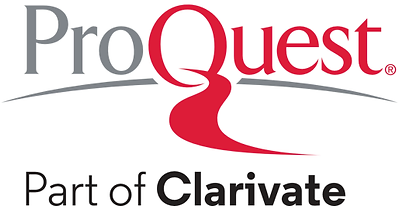Fabrication of Bio-Polymer Nanocomposite EMI Shields Based on Sugarcane Bagasse and PVA/PANI/MWCNT, and Evaluation of the Shielding Effectiveness in Relation to the Various Compositions
| Authors | M.B. Hasani1, T.N. Patel1, K. Inamdar1, P.V. Bhale2 |
| Affiliations |
1Department of Electronics Engineering, Sardar Vallabhbhai National Institute of Technology, Surat, India 2Department of Mechanical Engineering, Sardar Vallabhbhai National Institute of Technology, Surat, India |
| Е-mail | d21ec009@eced.svnit.ac.in |
| Issue | Volume 17, Year 2025, Number 4 |
| Dates | Received 20 April 2025; revised manuscript received 18 August 2025; published online 29 August 2025 |
| Citation | M.B. Hasani, T.N. Patel, et al., J. Nano- Electron. Phys. 17 No 4, 04013 (2025) |
| DOI | https://doi.org/10.21272/jnep.17(4).04013 |
| PACS Number(s) | 87.50.S – |
| Keywords | Bio char, Bio-polymer nanocomposites, Electromagnetic interference, Shielding effectiveness, S parameters. |
| Annotation |
In the present research, conductive polymer bio composite thin shields consisting of polyvinyl alcohol (PVA), poly aniline (PANI)-conductive polymer, multi-walled carbon nanotubes (MWCNT) and sugarcane bagasse (SB) biochar are fabricated and compared. The pyrolysis technique is employed for producing biochar. To develop several kinds of bio composite shields, PANI, MWCNT, and SB bio char were mixed with PVA using a magnetic stirrer. PVA and PANI compositions of 10g and 2g were fixed, respectively. Four shield samples (SB1, SB2, SB3, and SB4) were fabricated by altering the MWCNT and SB composition. Using the Van der Pauw approach, the conductivities of the shields were estimated to be 6.44, 21.88, 25.86, and 35.04 S/m, respectively. Shielding effectiveness (SE) and S-parameters were computed using the microwave test bench method in the X band at a frequency of 10 GHz. To determine SE and acquire S-parameters, simulations were run in the CST microwave studio simulator. Sample SB4 shield had the maximum SE of 40 dB (experimental) and 42 dB (simulated) at 1 mm thickness, subsequently, a comparison and explanation of the experimental and simulated data are shown. The combination of filler materials PANI and MWCNT is a novel choice which has increased the SE of the SB bio char. This is attributed to the higher conductivity and better aspect ratio of sugarcane bagasse bio char, which facilitates the formation of a conductive network on the shield's surface. Thus, the proposed novel combination of materials gives high SE for a very thin film. Utilizing abundant sugarcane bagasse waste for EMI shield fabrication not only reduces electromagnetic pollution but also contributes to mitigating environmental pollution. |
|
List of References |
Other articles from this number
1) Modeling the Breakdown of the p-n Junction Based on GaAs Using Molecular Dynamics Method [04001-1-04001-6]2) Role of Grain Boundary Strengthening for Increasing the Microhardness of Aluminum Alloys Irradiated by High-Current Pulsed Electron Beam [04002-1-04002-6]
3) Theoretical and Experimental Study of a Human Inner Ear Implant with an Ultrasonic Communication Line [04003-1-04003-8]
4) Morphological and Optical Properties of Silicon Micro-nanostructures Induced by DC Corona Discharge at Atmospheric Pressure [04004-1-04004-7]
5) Oblique Incidence E-polarized Photons on Infinite Periodic Grating of Metal Strips [04005-1-04005-5]
6) Microwave Photomodulation Method for Noninvasive Analysis of Doping Profiles in Inhomogeneous Semiconductor Structures [04006-1-04006-6]
7) On Increasing the Sensitivity of a Resonator Probe with Axial Symmetry in Local Microwave Diagnostics of Nanoscale Objects [04007-1-04007-7]
8) Physical Electronics of Piezoceramic Transducer Systems and their Dependence on the Character of the Electrical Excitation of the Systems [04008-1-04008-5]
9) Improvement in the Gas Detection Capacity of ZnO-based Sensor: Impact of Static Potential [04009-1-04009-7]
10) Near-surface Superconductivity in Topological GaSb and Bi2Se3 Whiskers [04010-1-04010-7]
11) Forecasting Electricity Consumption Using ARIMA-LSTM Model [04011-1-04011-7]
12) The Impact of Electromagnetic and Optical Radiation on Physical and Biological Systems [04012-1-04012-5]
13) Nano-Enhanced IoT Sensors and Hybrid Scheduling Algorithms for Smart Agriculture: A Multi-Layered Framework Towards Sustainability [04014-1-04014-6]
14) Finite-time Stabilization of Delayed Uncertain Systems Using a Novel Integral Inequality Approach [04015-1-04015-6]
15) Inflationary Cosmological Models Using Bianchi Types II-IX: A Mathematical Approach [04016-1-04016-5]
16) Solvothermal Synthesis and Comprehensive Characterization of High-Quality Graphene Oxide [04017-1-04017-5]
17) Groove-Slotted Textile Antenna for Enhanced Wearable Healthcare Applications [04018-1-04018-5]
18) Highly-Isolated Compact Quad-Lobed UWB MIMO Antenna with Hexagonal Slot for Enhanced 5G and Industrial IoT Applications [04019-1-04019-5]
19) Compact Broadband Microstrip Patch Antenna for 5G Communication Applications [04020-1-04020-5]
20) Performance Enhancement of Microstrip Circular Ring Dual-Band Patch Antenna with Minimum Reflection for Effective Wireless Communication Applications [04021-1-04021-5]
21) Efficient Miniaturized Patch Antenna Design for Short-Range Wireless Communications [04022-1-04022-5]
22) A Y-Shaped Patches Massive MIMO Antenna for Performance Measures in 6G Application [04023-1-04023-5]
23) Hybrid Shaped Miniaturized Ultra-Wideband Microstrip Patch Antenna for Various 5G and Remote Sensing Application [04024-1-04024-5]
24) Improving Performance Using 2 x 2 Single Element Massive MIMO Antenna in 6G Devices [04025-1-04025-5]
25) Flexible Material Based Broadband Antenna for Both C-and X-band Applications [04026-1-04026-5]
26) Intelligent Approach for Analyzing Semiconductor Band Gaps in Nanomaterial Systems [04027-1-04027-5]
27) Optimization of Defect Detection in Atomic Materials Using Graphene Layer [04028-1-04028-5]
28) Approach for Predicting Filtration Efficiency in Nanocomposite Membranes Using 2D Materials [04029-1-04029-6]
29) Optimization Technique for Parameter Estimation in Solar Photovoltaic Systems Using Nanomaterials [04030-1-04030-6]
30) Electrophysical Properties of Nanoscale Functional Materials Based on Fe and Ge for Sensor Electronic [04031-1-04031-4]
31) Enhancing X-ray Therapy: A Monte Carlo Study of Bismuth Sulfide Nanomaterials [04032-1-04032-5]
32) Influence of Shielding Potential on the Formation Process of Nanostructured Nitride Coatings of the MoN/CrN System [04033-1-04033-6]
33) Nanomodified Concrete for Harsh Environments: Enhancing Durability Using Nano-Admixtures and Cementitious Nanotechnology [04034-1-04034-5]
34) Design and Implementation of Charge Plasma Based Dopingless MBCFET Using Ultrathin Ge for Low Power Application [04035-1-04035-5]
35) Gadolinium Nanoparticles: A Promising Agent for Enhancing Radiotherapy at Low Concentrations [04036-1-04036-6]
36) Microwave Absorption Properties of a Composite Material Based on Polyvinyl Chloride and Yttrium Iron Garnet [04037-1-04037-7]
37) Numerical Modeling of the Cracking Process in a Hip Joint Endoprosthesis [04038-1-04038-5]
38) Personalities. V.B. Loboda [04039-1-04039-2]






